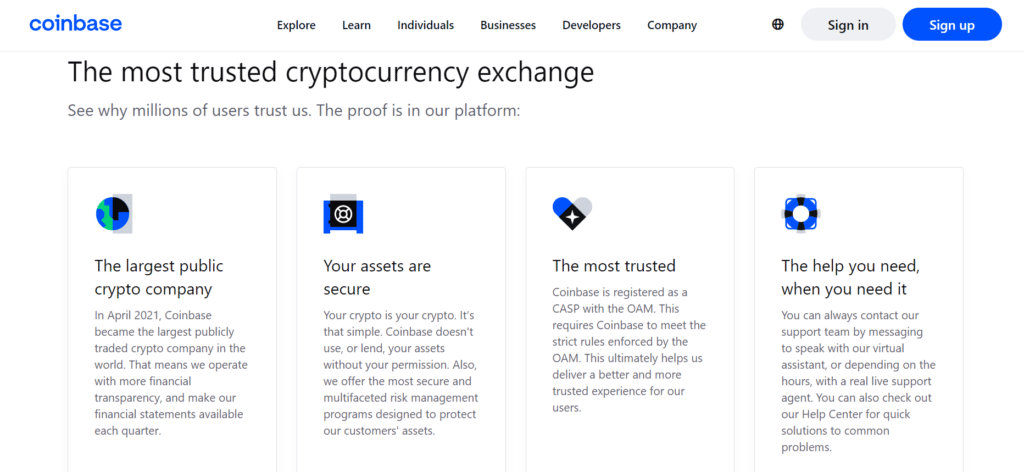
One of the most significant protocols in the field of decentralized finance (DeFi) is liquidity pools. But what exactly is a liquidity pool? A collection of assets that have been pooled together and made available to users for trading is called a liquidity pool.
The primary contrast between a liquidity pool and a traditional exchange is that a liquidity pool is decentralized, whereas a traditional exchange is centralized. This implies that anybody may add or withdraw assets from a liquidity pool, and there is no single point of control.
There are several distinct types of liquidity pools, but the most prominent are Uniswap and Balancer. In this blog article, we’ll take a closer look at what the liquidity pool is in DeFi and how they function.
But before we get into that, let’s briefly see what DeFi means.
What is DeFi?
DeFi, or decentralized finance, is a growing ecosystem of financial protocols built on Ethereum that enables the establishment of decentralized markets and financial instruments. It is an open financial system that uses blockchain technology to enable peer-to-peer financial services and gives people complete control over their assets.
Liquidity pools are an important feature of DeFi since they allow users to trade numerous assets in a single spot without having to convert them first. This increases trading efficiency while decreasing the risk associated with holding several assets.
What is A liquidity pool in DeFi?
A liquidity pool is a group of funds that may be utilized to trade a certain asset or group of assets.
Users deposit their assets into a smart contract, which subsequently generates tokens to reflect the user’s stake in the pool to form this sort of pool. The value of these tokens varies according to the supply and demand for the underlying assets.
A liquidity pool’s objective is to offer liquidity to the market by allowing investors to purchase and sell assets without going through an exchange.
Users deposit their assets into liquidity pools, which are established. The assets in the pool are then utilized for trading with other users who want to purchase or sell the same assets.
The trades in the pool are all done using smart contracts, ensuring that everyone receives the appropriate market price for their goods.
The length of a liquidity pool varies with the amount of money placed into it. Some pools may just have a few hundred dollars in assets, while others may have hundreds of thousands of dollars in assets.
Liquidity pools play an important role in the development of a decentralized finance (DeFi) system, which is gaining traction in the crypto space more and more daily.
Following that, we will go through how the Liquidity Pool work in DeFi and the roles of the liquidity pool in DeFi.
How do liquidity pools work In DeFi?
Liquidity pools are an important component of DeFi since they enable users to trade without worrying about the liquidity of their assets. There are several sorts of liquidity pools, each with advantages and disadvantages.
A Uniswap pool is one sort of liquidity pool. Uniswap is a decentralized exchange that lets users trade Ethereum tokens without depositing them. Users merely contribute liquidity to the pool and then get a share of the trading costs when deals are executed.

As a result, Uniswap is an appealing choice for people who wish to trade regularly or do not want to keep their assets on exchange. It should be emphasized, however, that Uniswap does not provide any custodial services; thus, users must be cautious not to lose their private keys.
A MakerDAO Collateralized Debt Position (CDP) is another sort of liquidity pool. When a user invests collateral into the MakerDAO smart contract, a CDP is formed.
Consider this example to better understand how a liquidity pool works in practice. Assume you’re in line to order something from the store. In this case, liquidity is analogous to having a large number of employees available to serve you.
Customers would be pleased if orders and transactions were completed more quickly. In the case of an illiquid market, however, we can compare it to having only one worker available and a large number of customers.
Obviously, this situation would result in slower orders and inefficient work, leading to client dissatisfaction.
In addition, buyers and sellers of an asset provide liquidity in conventional finance. DeFi, on the other hand, is heavily reliant on liquidity pools. Without liquidity, a decentralized exchange, or DEX, will fail. As a result, DEXs must always be linked to a liquidity pool.
A liquidity pool is a smart contract-secured digital supply of the cryptocurrency. As a result, liquidity is created, which allows for faster transactions.
What are the roles of the liquidity pool In Defi?
Large institutions, such as banks and hedge funds, use liquidity pools to trade securities in traditional finance. However, in the domain of decentralized finance (DeFi), liquidity pools are accessible to anybody with an Internet connection.
Liquidity pools are an essential component of DeFi because they enable the formation of new markets and trading assets that would otherwise be difficult or impossible to trade.
For example, a liquidity pool may be established for a new cryptocurrency that does not yet have a trading market. Alternatively, a pool might be formed to trade a rare token not listed on any exchanges.
Liquidity pools, in addition to developing new markets, improve the efficiency of current markets by offering narrow spreads and deep liquidity. This makes exchanging assets easier and less expensive, which benefits everyone in the market.
Finally, with DeFi protocols, liquidity pools can be utilized to give loans. When someone takes out a loan using the DeFi protocol, they are usually required to put up collateral worth more than the loan amount. This collateral is then stored in a smart contract until the loan is paid back.
Why would we require liquidity pools?
You may have seen the order book on controlled exchanges like Coinbase or Binance (depth of market). This is also how traditional stock exchanges such as the NYSE or Nasdaq operate.

In this order book model, buyers and sellers meet and establish their bid and bid criteria. Buyers will always want to acquire a particular item for the lowest feasible price, while sellers will try to sell the same asset for the greatest possible price.
For those deals to take place, both buyers and sellers must agree on a price. This might happen whether a customer bids more or a vendor reduces their price.
But what if nobody is willing to complete your requests at a reasonable fee? What happens if there aren’t enough cryptocurrencies to satisfy your urge to buy? This is where market makers enter the picture.
Market makers, in essence, are entities that assist buying and selling by constantly being predisposed to purchase or sell a given asset. By doing so, they provide liquidity, allowing users to trade without waiting for another counterparty to emerge.
The foremost reason for this is that the order book concept is heavily predicated on having a market maker or many market makers who are always “creating the market” on a certain asset. Without market makers, an exchange becomes unstable and nearly unworkable for ordinary users.
On top of that, market makers often follow the current rate of an asset by regularly altering their pricing, resulting in a large number of orders and order cancellations being sent to an exchange.
Advantages of employing a liquidity Pool in DeFi
- The main advantage of using a liquidity pool is that it allows users to trade assets without passing through an exchange. This can save time and money while also providing additional privacy.
- Lower costs: Because there is no need to go via an exchange, trade expenses are considerably lowered.
- Enhanced security: Because all trades are handled via smart contracts, there is no chance of fraud or theft.
- Trading is available 24 hours a day, seven days a week, so you can trade anytime.
- Another significant advantage of employing liquidity pools is that they can help to stabilize the price of an asset; if the price of an asset begins to fall, the pool may be utilized to buy it up and raise the price. This protects investors and keeps the market healthy.
- Finally, liquidity pools may be utilized to generate income on your investment. You may put your funds in several pools and receive income from them. This might be an excellent method to expand your portfolio without taking on more risk.
How to get started with a liquidity pool
If you’re new to the realm of decentralized finance (DeFi), you might be asking how to get started with a liquidity pool. In the preceding paragraphs, we critically analyzed what a liquidity pool is.
To get started with a liquidity pool, you must first choose a trustworthy decentralized exchange that provides them. Once you’ve identified an exchange, you’ll need to deposit some cryptocurrency into the pool in order to begin trading. The quantity of cryptocurrency required varies with the exchange, so be sure to verify the requirements before getting started.
You’ll be able to trade on the decentralized exchange once you’ve deposited a cryptocurrency. The values of the assets in the pool will fluctuate according to supply and demand, so it’s critical to keep a watch on the market and sell when prices are high and purchase when prices are low.
Liquidity pools can be an excellent option for trading cryptocurrencies without worrying about market volatility. However, it is crucial to realize that while trading in a pool, you are still subject to risk, so always ensure you know what you’re doing before getting started.
And talking about risks, let’s see some of the risks associated with liquidity pools.
The risks of liquidity pools
The primary advantage of employing a liquidity pool is that it allows for considerably more efficient price discovery than a typical centralized exchange. There are, however, some risks involved with liquidity pools that should be addressed before investing.
- One of the most significant risks linked with liquidity pools is the possibility of flash loans. A flash loan is essentially a short-term loan made against collateral in a liquidity pool. These loans are often used to create arbitrage possibilities, but they may also be used to attack smart contract loopholes. If a dishonest actor takes out a flash loan and fails to repay it, the collateral in the liquidity pool is in danger. This might lead to the collapse of the entire pool and any additional pools linked to it via smart contracts.
- The second risk to think about is the possibility of temporary loss. This happens when the value of the tokens in a liquidity pool varies, and one token becomes more valuable than another. If someone subsequently traded those tokens back into the original currency, they would lose money due to the price gap.
- The third is Impermanent Loss which is another prevalent risk in liquidity reserves. This risk arises when the volatility ratio between the two assets represented is imbalanced during periods of extreme volatility. This way, the price in fiduciary currency (euros, dollars, etc.) is altered. Actually, this risk causes a price differential between keeping the asset in possession, for example, stored, and holding it inside the liquidity deposit. In general, commissions are used to mitigate this risk. However, depending on the circumstances, volatility, and market timing, it may end up outweighing the impact of the liquidity provider rate.
- The fourth is Counterparty risk: when you place your assets in a liquidity pool, you trust that the other users in the pool will not steal or otherwise misuse them. This risk can be reduced by employing a trustworthy liquidity provider, such as Kyber Network or Bancor.
- Finally, there is the possibility of smart contract bugs. As with any software, there is always the possibility of errors (bugs) in the coding, which might result in user losses. This risk may be reduced by employing well-tested and verified smart contracts from trusted developers.
Overall, while there are certain dangers involved with employing liquidity pools, they may be efficiently controlled, provided precautions are taken.
Conclusion
Liquidity pool is a collection of funds from several investors used to trade a certain asset. The main advantage of having a liquidity pool is that it allows traders to access more capital than they can on their own.
Liquidity pools are a key aspect of the DeFi ecosystem, helping to make it one of the most interesting and inventive areas in the crypto world.
